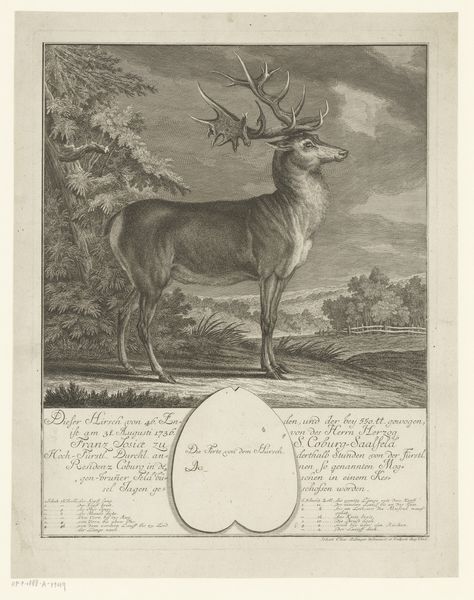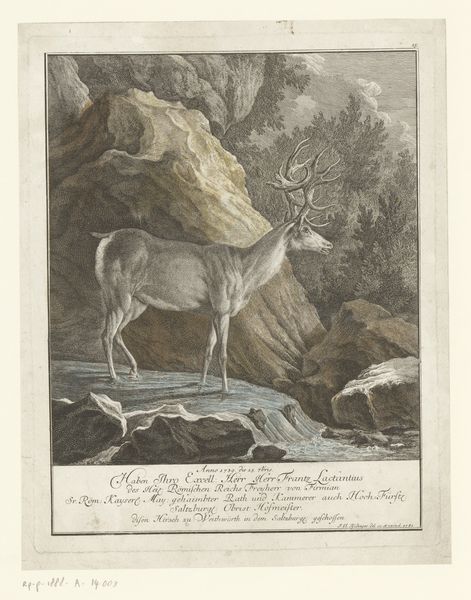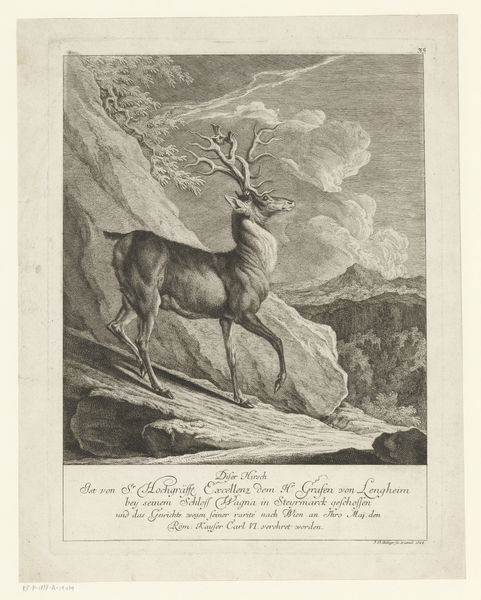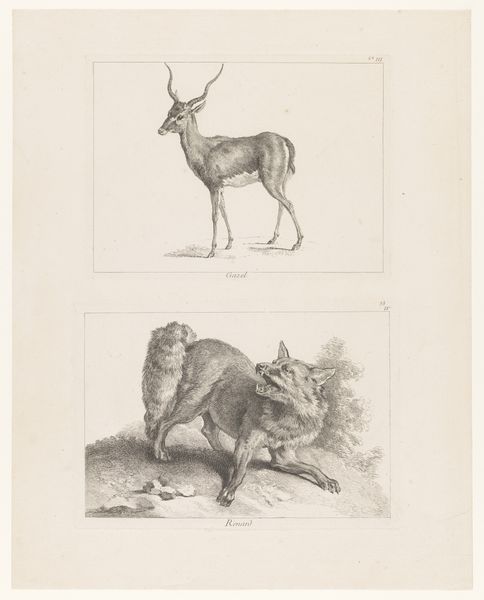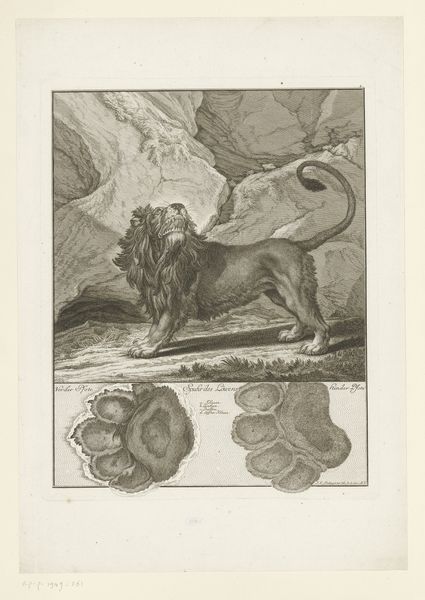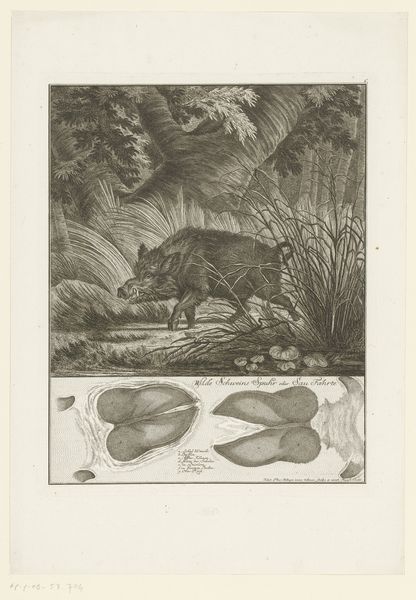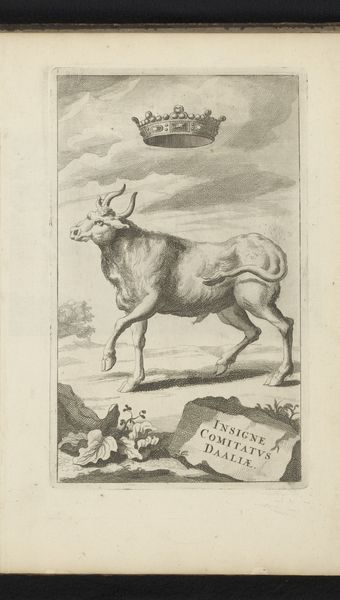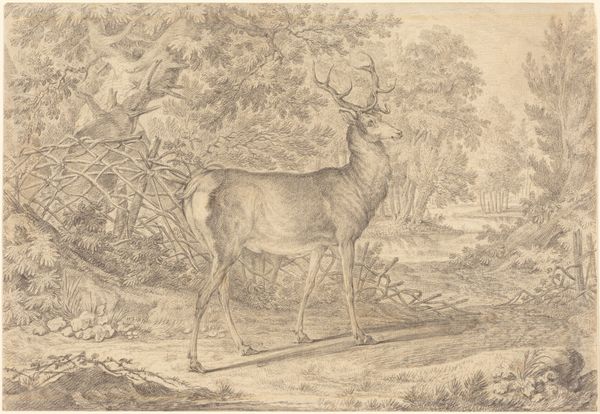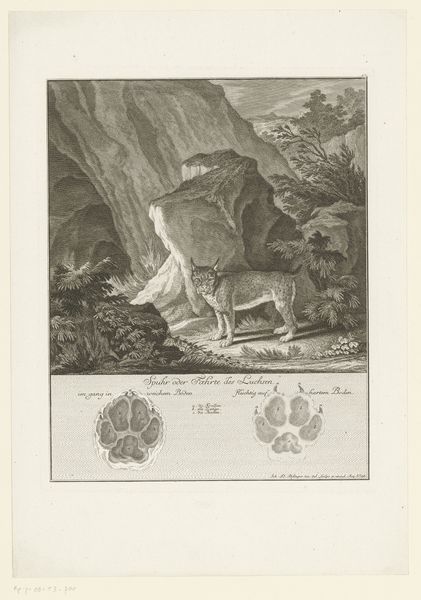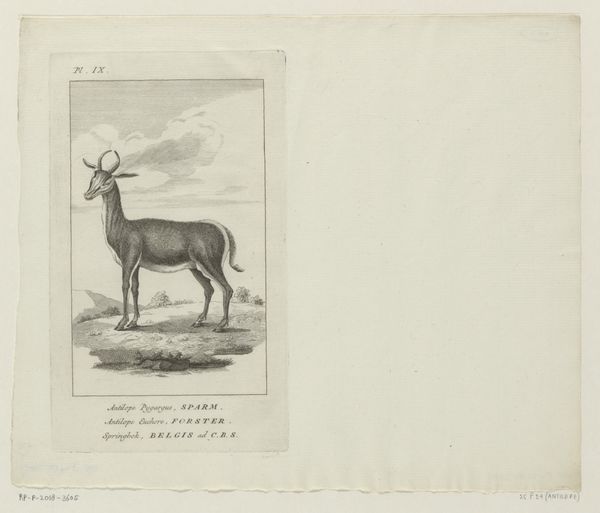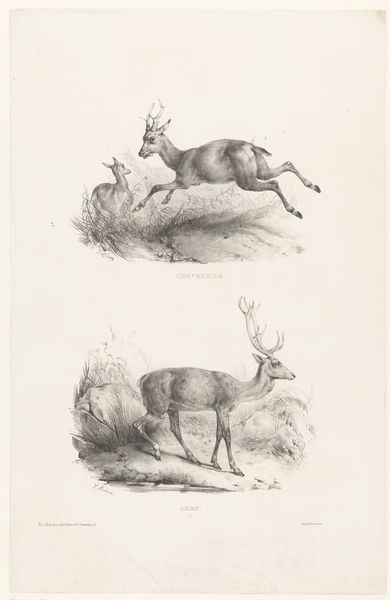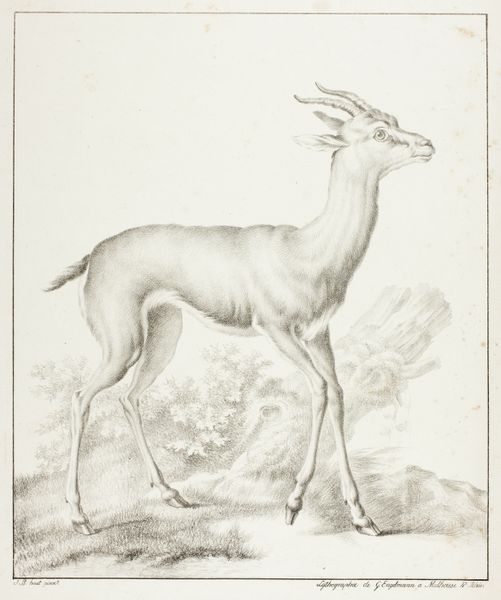
print, engraving
#
baroque
#
animal
# print
#
old engraving style
#
landscape
#
forest
#
engraving
#
realism
Dimensions: height 372 mm, width 300 mm
Copyright: Rijks Museum: Open Domain
Editor: We’re looking at “Hert met spoor,” or “Deer with Track,” a 1751 engraving by Johann Elias Ridinger, at the Rijksmuseum. The stag is so stately, but something about the composition feels almost scientific. What catches your eye? Curator: Indeed. Disregarding iconographic interpretations of the stag itself, observe how the composition is neatly divided into two distinct registers. The upper register presents a seemingly straightforward depiction of a stag within a landscape. But consider the function of line here. Editor: How so? Curator: Notice the intricate network of lines, particularly in the stag’s fur and antlers, but also the surrounding foliage and terrain. Ridinger meticulously employs hatching and cross-hatching, yes? This serves to model form and create tonal variation, giving the deer a sculptural quality. Editor: Yes, I see. The controlled precision gives the fur almost a tangible texture. Curator: Now consider the lower register. It depicts details of the deer’s tracks in an almost diagrammatic way, complete with accompanying text. The relationship is not one of pure aesthetic pleasure, but rather speaks to observation, classification, and the empirical drive so central to the period. The artist uses two different methods of depiction. Editor: So it’s not just a pretty picture, but also almost an exercise in observation, presented with incredible detail! Curator: Precisely. The lines allow for an understanding that extends beyond a superficial glance; it demands focused study of form and its representational possibilities. What do you think about the level of the realism within the Baroque style? Editor: This has really shifted my view – I now appreciate the engraving for its dedication to both artistry and accuracy.
Comments
No comments
Be the first to comment and join the conversation on the ultimate creative platform.
